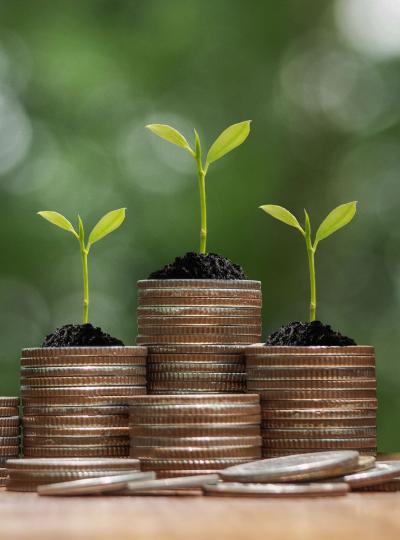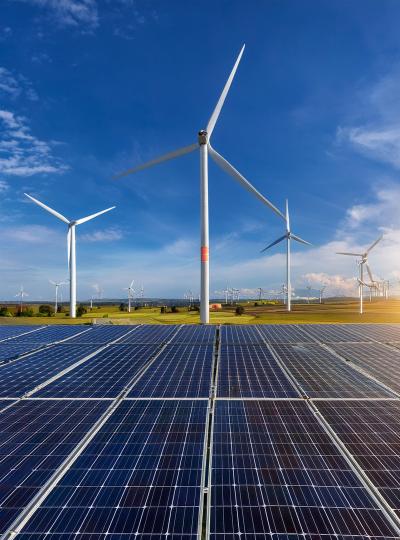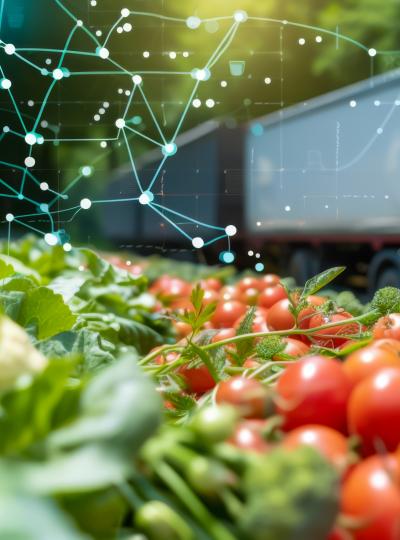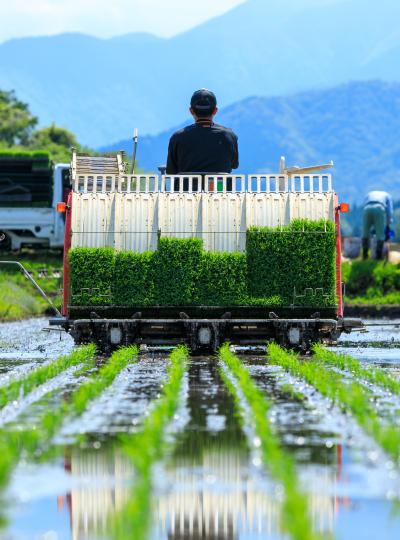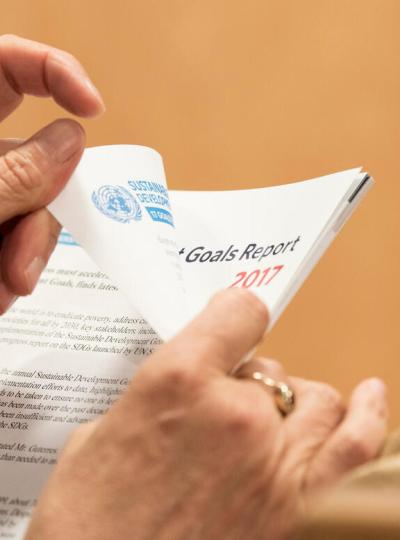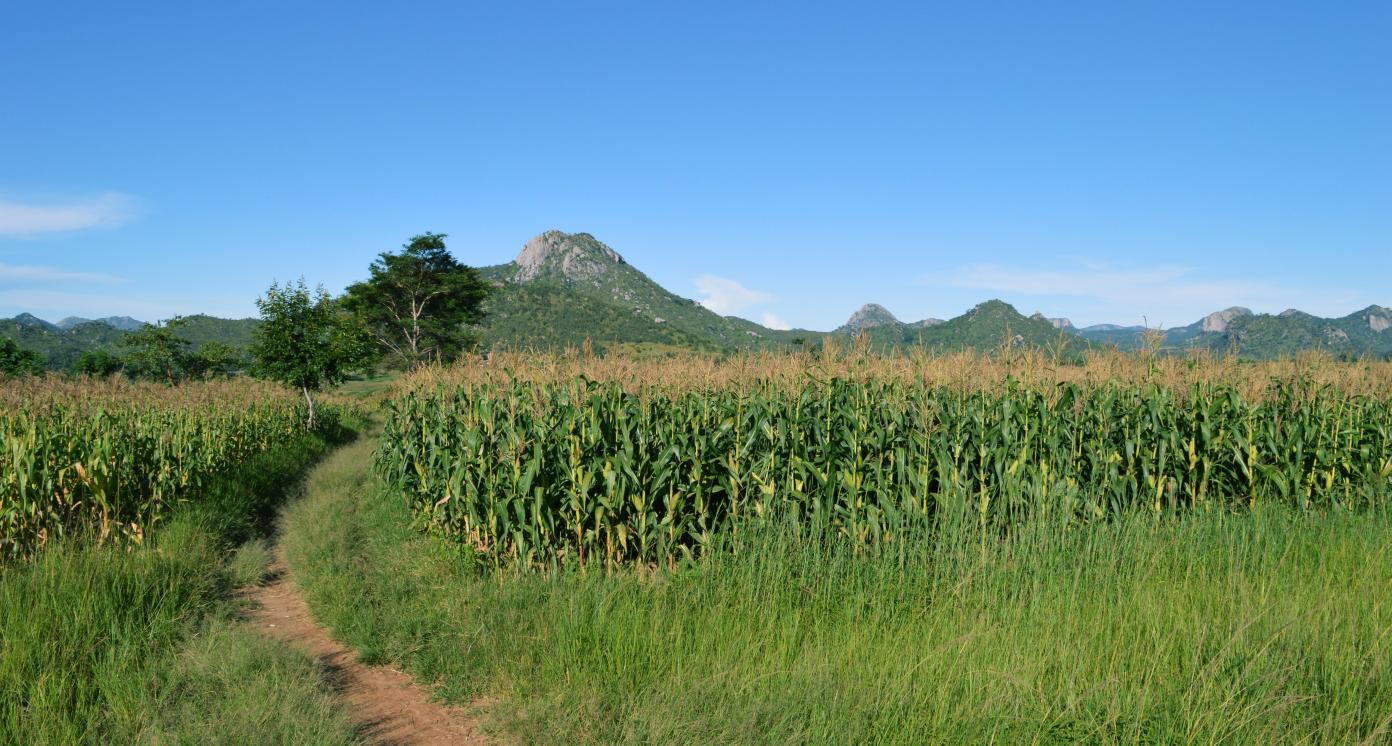Mega Farms
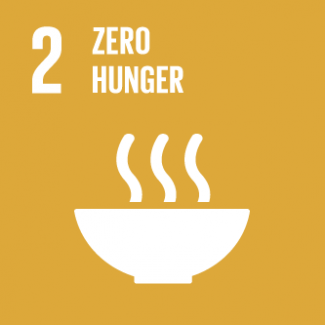
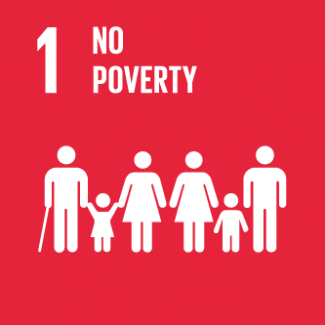
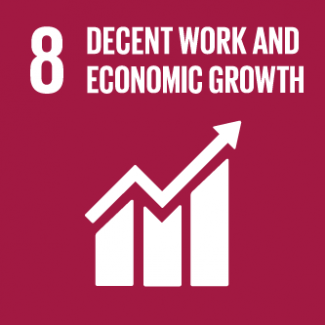
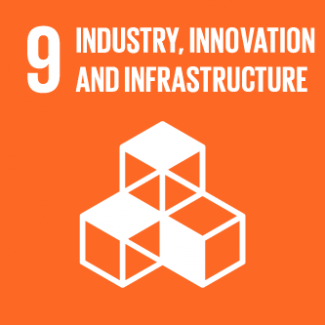
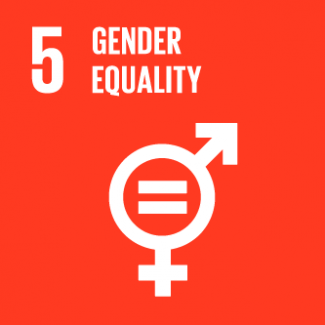
Business Model Description
Establish large scale agricultural production / processing and aggregation centres on Green Belt Authority (GBA) earmarked areas (Salima, Nchalo Chikwawa, Nkhotakota, Mbalangwe Dedza, Karonga District, Mangochi, Lilongwe) within the geographical proximity of production zones, to ease logistics, enhance quality and facilitate marketing, focusing on high-value crops outlined in the National Export Strategy II. The Government’s Mega Farm Project aims at facilitating the establishment of large-scale production units that will also anchor willing surrounding smallholder farmers through an out-grower system that will be premised on contract farming arrangements. Through the anchor farm model, mega farms will provide productivity enhancing support to the anchored smallholder farmers. This support will include the provision of extension and advisory services, provision of high-quality inputs (on loan), provision of warehousing facilities, farm equipment hiring services and the implied linkage to markets (5).
Expected Impact
Enhance industrial capacity and increase export volumes, which will amplify income-generating activities for farmers, and mitigate current account deficits.
How is this information gathered?
Investment opportunities with potential to contribute to sustainable development are based on country-level SDG Investor Maps.
Disclaimer
UNDP, the Private Finance for the SDGs, and their affiliates (collectively “UNDP”) do not seek or solicit investment for programmes, projects, or opportunities described on this site (collectively “Programmes”) or any other Programmes, and nothing on this page should constitute a solicitation for investment. The actors listed on this site are not partners of UNDP, and their inclusion should not be construed as an endorsement or recommendation by UNDP for any relationship or investment.
The descriptions on this page are provided for informational purposes only. Only companies and enterprises that appear under the case study tab have been validated and vetted through UNDP programmes such as the Growth Stage Impact Ventures (GSIV), Business Call to Action (BCtA), or through other UN agencies. Even then, under no circumstances should their appearance on this website be construed as an endorsement for any relationship or investment. UNDP assumes no liability for investment losses directly or indirectly resulting from recommendations made, implied, or inferred by its research. Likewise, UNDP assumes no claim to investment gains directly or indirectly resulting from trading profits, investment management, or advisory fees obtained by following investment recommendations made, implied, or inferred by its research.
Investment involves risk, and all investments should be made with the supervision of a professional investment manager or advisor. The materials on the website are not an offer to sell or a solicitation of an offer to buy any investment, security, or commodity, nor shall any security be offered or sold to any person, in any jurisdiction in which such offer would be unlawful under the securities laws of such jurisdiction.
Country & Regions
- Malawi: Countrywide
- Malawi: Central
Sector Classification
Food and Beverage
Development need
Agriculture accounts for 30% of GDP and generates over 80% of national export earnings. The agriculture sector employs 64% of the country’s workforce and contributes to food and nutrition security (4). Turning the country’s agriculture sector into an engine of growth has been a long-term development goal for Malawi for many years (1). The sector performs below its potential due to a myriad of challenges including increased climate impacts, low mechanization, poor access to finance, weak market linkages and limited access to irrigation (8).
Policy priority
Under pillar 1 of MW2063, the Government states that the country aims to have an optimally productive and commercialized agriculture sector by 2063 (2).
Gender inequalities and marginalization issues
According to one estimate, women are responsible for 50 and 70% of all agricultural tasks in the country, thereby producing 70% of local food.(3)
Investment opportunities introduction
There are various investment opportunities in agriculture, including livestock production (for dairy and beef), aquaculture, horticulture, agro-processing, sugar, soybean, cow peas, pork production, honey production, integrated cotton development, cassava production, and mushroom growing. These agricultural products can be processed and exported under trading arrangements encompassing SADC, COMESA, and the Generalized System of Preferences (GSP) SCHEME of the EU’s Everything but Arms (EBA) Initiative, the African Growth and Opportunity Act (AGOA), China General Tariff Preferential Treatment, the India Preferential Trade Arrangement, the Japan Preferential Trade Arrangement, and the Africa-wide market via the AfCFTA (1).
Key bottlenecks introduction
The sector faces vulnerability to weather shocks; poor management of land, water and soils; low adoption of agricultural technologies; low access to finance facilities and farm inputs; low mechanization and technical labour skills; a limited irrigation system and weak linkages to markets (4).
Food and Agriculture
Development need
Lower yields and high global and domestic prices are pushing many Malawian families into food insecurity. According to the joint assessment of the IPC Working Group, one in three Malawians is prone to food insecurity and, for the 2022/23 lean season, one in five Malawians will face crisis levels of acute food insecurity (5).
Policy priority
According to MW2063, Malawi aims to increase the area under commercial agriculture as proportional of area under commercial agriculture from 16% to 80% by 2063 and increase the share of agriculture exports other than tobacco from 34.2% (2016) to 95% by 2063 (2).
Gender inequalities and marginalization issues
Only a third of agricultural holdings in Malawi are held by women (and this is still higher than in many African countries). Female-managed plots are, on average, 12% smaller than those of their male counterparts and 25% less productive as a result of differing levels of knowledge and access to inputs for improving farming efficiency (6).
Investment opportunities introduction
Malawi relies primarily on rain-fed agriculture. Opportunities to expand and support irrigation and bolster horticultural products such as vegetables, flowers, fruits, and rice that can be grown using surface, gravity, pump, river diversion, drip, or sprinkler irrigation systems (1).
Key bottlenecks introduction
Low production, weak market linkages, power shortages, limited access to market information and inadequate aggregation and storage opportunities pose the largest challenges to increasing engagement and investment (7).
Agricultural Products
Pipeline Opportunity
Mega Farms
Establish large scale agricultural production / processing and aggregation centres on Green Belt Authority (GBA) earmarked areas (Salima, Nchalo Chikwawa, Nkhotakota, Mbalangwe Dedza, Karonga District, Mangochi, Lilongwe) within the geographical proximity of production zones, to ease logistics, enhance quality and facilitate marketing, focusing on high-value crops outlined in the National Export Strategy II. The Government’s Mega Farm Project aims at facilitating the establishment of large-scale production units that will also anchor willing surrounding smallholder farmers through an out-grower system that will be premised on contract farming arrangements. Through the anchor farm model, mega farms will provide productivity enhancing support to the anchored smallholder farmers. This support will include the provision of extension and advisory services, provision of high-quality inputs (on loan), provision of warehousing facilities, farm equipment hiring services and the implied linkage to markets (5).
Business Case
Market Size and Environment
For Kilombero rice alone, Malawi is potentially losing an opportunity of earning USD 480 million every year
In 2021, Malawi's total exports were valued at USD 947 million. Sugar, tea and tobacco accounted for 60% of those exports, which account for USD 568.2 million (21). SADC is the natural market for Malawian exporters where 39% of the country’s untapped export potential (USD 154.4 million) lies (33).
Considering examples of specific crops, the aromatic Kilombero rice of Malawi has proven to only suit climatic conditions of Malawi. Currently, the demand for aromatic Malawi rice at the international market stands at 800,000MT per year whilst national rice exports to formal markets are at 20,000MT. Within COMESA alone, Malawi only meets 2.5% of the total market demand. With this, it is estimated that Malawi is potentially losing an opportunity of earning USD 480 million every year (22). Malawi is importing about 20,000 metric tons of banana fruit valued at almost USD 12 million, annually for a commodity that the country can easily produce (22). Groundnuts, excluding roasted or cooked, actual exports stand at USD 21 million annually. However there is an has an export potential of USD 25 million. Finally, legumes (dried, shelled, split and skinned) currently have an export value of USD 24 million but an unrealized export potential of USD 69 million (29).
Total cultivated land in Malawi is approximately 6.5 million hectares, the vast majority (over 97%) of which is rain fed. This provides huge opportunity for large projects under irrigation (34). The Green Belt Authority has in excess of 24,000 ha of land earmarked for large scale investment (35). Malawi's National export Strategy (NESII) aims to increase the volume of exports by 10% and the value of exports of non-traditional products by 50% between 2021 and 2026 (27).
Indicative Return
> 25%
According the Malawi Investment and Trade Centre (MITC) compendium of projects, two Green Belt Authority (GBA) projects averaged an expected IRR of 48.3% (22).
Investment Timeframe
Short Term (0–5 years)
Average payback periods expected for projects earmarked under Green Belt Authority (GBA) particularly for rice and banana are less than 5 years (22), and vary based on the type of agricultural activity.
Ticket Size
USD 1 million - USD 10 million
Market Risks & Scale Obstacles
Market - Highly Regulated
Business - Supply Chain Constraints
Market - Highly Regulated
Impact Case
Sustainable Development Need
The high level of subsistence farming has been a key factor in Malawi’s persistent poverty. 94% of all poor households are found in rural communities, with the rural poverty headcount ratio for Malawi at 57%, three times higher than in urban centres, at 19%. This is partly related to the low productivity of farming systems in Malawi in terms of crop yields, and partly due to the small average farm size of only 0.7 hectares (ha) in land, which is considerably less than in other countries in the region (5).
Lower yields and high global and domestic prices are pushing many Malawian families into food insecurity. According to the joint assessment of the IPC Working Group, one in three Malawians is prone to food insecurity and, for the 2022/23 lean season, one in five Malawians will face crisis levels of acute food insecurity (5).
Despite representing a large portion of the economy, agricultural productivity in the country is poor; the country’s agricultural output per worker is one of the lowest globally. Poor and degraded soils resulting from continuous cultivation, despite having higher intensity use of fertiliser as compared to other Sub-Saharan African countries, are one driving factor behind low output (28).
Gender & Marginalisation
In general, Malawi’s female farmers are less productive (by 28% on average) compared to their male counterparts. This is so because women frequently have unequal access to key agricultural inputs such as land, labour, knowledge, fertiliser, improved seeds, and mechanization (24).
Expected Development Outcome
Mega farms with Green Belt Authority (GBA) diversify Malawi's agricultural exports, increasing foreign currency reserves, enhance food security and create additional employment in the agricultural sector.
The Government’s backing of Mega Farms with Green Belt Authority (GBA) is based on the premise that large farms can be structured to generate positive spill over effects on surrounding smaller farms and communities (23).
Gender & Marginalisation
Studies show that once access to agricultural inputs such as labour, machinery and fertilizer is accounted for, women can be as productive and technically efficient as men. Women's focus on the production of subsistence crops also inhibits their productivity. Mega Farms allow female farmers to benefit from proximity to large anchor farms allow through information and opportunities to secure offtake agreements (36).
According to The Cost of the Gender Gap in Agriculture, Malawi stands to gain if women are more involved in the entire agricultural value chain. The report estimates that closing the gender gap would result in a 7.3% increase in crop production, USD 100 million increase in GDP and lift 238,000 people out of poverty (24).
Primary SDGs addressed

2.4.1 Proportion of agricultural area under productive and sustainable agriculture
46% (2020) (26).
100% (2030) (26).

1.1.1 Proportion of the population living below the international poverty line by sex, age, employment status and geographic location (urban/rural)
1.2.1 Proportion of population living below the national poverty line, by sex and age
73.9% (2021) (26).
50.7% (2021) (26).
0% (2030) (26).
0% (2030) (26).
Secondary SDGs addressed



Directly impacted stakeholders
People
Gender inequality and/or marginalization
Planet
Corporates
Public sector
Indirectly impacted stakeholders
Gender inequality and/or marginalization
Corporates
Public sector
Outcome Risks
Dependent on the scale of operations, mega farms are incentivised to plant large areas of single crops, decreasing biodiversity and therefore resilience to climate disasters and diseases. Planting the same crops season after season depletes soil, necessitating heavy use of fertilizer (5).
Mega farms, if not implemented correctly, could increase inequality. Commercial incentives, coupled with the difficulties of working with often disorganized and widely dispersed smallholder farmers means that companies working within mega-PPPs are likely to work with more organized or ‘commercially viable’ farmers. These farmers will have access to larger land holdings and be able to meet more stringent quality control and sourcing requirements. These wealthier farmers represent ‘the richest of the poor’ in many rural contexts. (39)
Impact Risks
If smallholder farmers significantly increase production of export crops because prices of those crops become relatively more attractive than those of maize and other food crops, there is a risk that the country’s food security will suffer (14).
If large commercial farms view onboarding surrounding small holder farmers from surrounding communities as project risk, this could fail to act as a motor for the rural economy or source of positive spill overs in terms of productivity and profits for neighbouring smallholder farms.
Impact Classification
What
Farmers, and the overall population benefit from a strengthened economy and employment brought through by increased exports. Malawi can unlock its full export potential in agriculture and agro-processing to cover for domestic consumption and export.
Who
Smallholder subsistence farmers around project sites follow a transition. A vibrant commercial smallholder sector gives rise to better non-farm livelihood opportunities, sparking rural economic transformation.
Risk
The business model is proven but requires considerations around the impact on the countries' food security if smallholder farmers focus primarily on high value cash crops and the implications on the local rural economy.
Contribution
Transitioning smallholder subsistence farmers to small-holder commercial farmers is imperative to longer-term rural economic development. This means strengthening the productive alliance model and assisting producer organisations to formalize and expand.
How Much
Agriculture accounts for more than 25% of Malawi’s GDP (15). The country's large estates contribute roughly 80% of Malawi’s export earnings each year and around 30% of agriculture’s contribution to GDP (42).
Impact Thesis
Enhance industrial capacity and increase export volumes, which will amplify income-generating activities for farmers, and mitigate current account deficits.
Enabling Environment
Policy Environment
The National Agriculture Policy (NAP) of 2016 is an overarching and consolidated framework that guides the agriculture sector in Malawi. Its main goal is to achieve sustainable agricultural transformation that will result in significant growth of the agricultural sector, expanding incomes for farm households, improved food and nutrition security for all Malawians, and increased agricultural exports (38).
The revised National Irrigation Policy's (NIP) of 2016 sets a goal to contribute to sustainable national economic growth and development through enhanced irrigated agriculture. Specifically, the policy seeks to increase land under sustainable irrigation, facilitate crop diversification and intensification, create an enabling environment for irrigated agriculture, optimize investment in irrigation development taking into account climate change, enhance capacity for irrigated agriculture, and promote a business culture in the small-scale irrigated agriculture sector (38).
MW2063 states that Malawi aims to cater for national food security needs, support agriculture commercialisation and promote exports (2).
National Export Strategy II is a vehicle to achieve Malawi's new aspirations where manufacturing of value-added goods and services is set to create more wealth through income and employment generation (40).
National Agricultural Investment Plan (NAIP) (2017- 2022) provides a framework for guiding investment in the sector, ensuring coherence with overall and sectorial policy and investment frameworks. The NAIP adapts the goals set out in the NAIP, namely ensuring sustainable agricultural transformation which will result in significant growth in the agricultural sector, expanding incomes for farm households, improving food and nutrition security for Malawians and increasing agricultural exports (9).
National Resilience Strategy 2018-2030 aims to create a country free of chronic vulnerability and nutrition insecurity, where sustainable economic development creates opportunities for everyone, and where people are resilient to economic and environmental shocks that affect their lives and livelihoods (10).
Financial Environment
Financial incentives: The National Bank of Malawi provides finance in the form of a farm infrastructure and implements loan for small scale or estate farmers for the sole purpose of acquiring agricultural equipment and other farm implements. The loan facility is open to all eligible farmers of Malawian origin or foreign farmers residing in Malawi at 6.1% to 8.1% above reference rate depending on risk profile of customer. Farmers can approach the National Bank of Malawi to access loan facility (12).
Fiscal incentives: Malawi offers inceptives regarding import duty, import excise and VAT free on importation of a variety of goods for direct use in irrigation and horticulture. The incentives are accessed after prior recognition from Principal Secretary of the Ministry of Agriculture, Irrigation and Water Development. The incentives apply to goods intended for export only and upon prior approval by the Minister of Industry and Trade (31).
Other incentives: Claim on capital expenditures are provided for the agriculture sector in relation to the construction of dams, dykes and land preparation are claimable. For this incentive, the taxpayer is eligible to claim the full cost on the dam, dyke or land preparation. Capital expenditure entails an element of improvement of a capital item. Revenue expenditures are expenses incurred in order for one to generate revenue. For special traders and cases as in the agriculture sector, some capital expenses are treated as acceptable expenses and will therefore be used to reduce net profit and thus reduce income tax. This provision reduces income tax payable by the business entity (31).
Regulatory Environment
Special Crops Act of 1963 (SCA) Regulates the production and marketing of crops deemed important to the country’s economy (38).
Agriculture (General Purposes) Act of 1987 (AGPA) was enacted with the broad aim of the general regulation of the agriculture industry in Malawi. The objective of the AGPA was to provide the government a legal framework to control and regulate various activities in the agriculture industry. The Act designates the Agricultural Development and Marketing Corporation (ADMARC) as the sole agricultural produce buyer in the country (38).
The Control of Goods Act (CoGA) regulates imports and exports of goods, including agricultural produce (11).
Irrigation Act of 2001 was developed to support the implementation of policies and programs on irrigation and to establish the formation of the National Irrigation Board. The Act provides the legal framework for the implementation of the National Irrigation Policy (2016), which also promotes sustainable irrigation development and management (38).
Customary Land Act (2016) establishes the existence of land within the boundaries of a Traditional Land Management Area other than Government or reserved land. The Act also establishes Customary Land Committees and Tribunals to assist Traditional Authority (TA) in administering land issues in the area under their jurisdiction (38).
Marketplace Participants
Private Sector
Seed Co Malawi, Multi-Seed Company Limited (MUSECO), Agricentre Malawi, Unitrans Malawi, National Bank of Malawi, Standard Bank Group.
Government
Ministry of Agriculture, Irrigation, and Water Development (MoAIWD), Ministry of Lands, Housing and Urban Development, Agricultural Development and Marketing Corporation (ADMARC), National Irrigation Board.
Multilaterals
African Development Bank (AfDB), World Bank Group, International Finance Corporation (IFC), Commercial Agriculture for Smallholders and Agribusiness (CASA), USAID.
Non-Profit
Rural Development Partners (RDP), Tiyeni, National Smallholder Farmers' Association of Malawi (NASFAM).
Public-Private Partnership
The Inosselia-Green Belt Authority (GBA) horticultural farm near Kamuzu International Airport (KIA) in Lilongwe is a Public Private Partnership (PPP) Joint Venture (JV) where Inosselia has 51% shares, in the PPP JV and the GBA has 49% shares in the project. The GBA provided the land and Inosselia offered financing and development of state of the art agricultural technology to produce high-quality horticultural products for the local market and for export (32).
Target Locations
Malawi: Countrywide
Malawi: Central
References
- (1) International Trade Administration, 2022. Malawi - Country Commercial Guide: Agriculture Sector. https://www.trade.gov/country-commercial-guides/malawi-agricultural-sector
- (2) Government of Malawi, 2020. Malawi 2063: Malawi’s Vision for An Inclusively Wealthy and Self-reliant Nation. https://npc.mw/wp-content/uploads/2021/02/MW2063-VISION-FINAL.pdf
- (3) UN Women, 2018. Factors Driving the Gender Gap in Agricultural Production – Malawi. https://africa.unwomen.org/sites/default/files/Field%20Office%20Africa/Attachments/Publications/2019/the20gender20gapcompressed.pdf
- (4) JICA, 2022. Sector Position Paper: Agriculture. https://www.jica.go.jp/Resource/malawi/english/activities/c8h0vm00004bpzlh-att/agriculture.pdf
- (5) World Bank Group, 2022. Malawi Economic Monitor – Planning Beyond the Next Harvest: Advancing Economic Stability and Agricultural Commercialisation. https://www.worldbank.org/en/country/malawi/publication/economic-monitor
- (6) UMFULA, 2017. Gender, Agriculture and Climate Change in Malawi. https://futureclimateafrica.org/project/umfula/
- (7) USAID, 2016. USAID/Malawi Private Sector Engagement Assessment. https://pdf.usaid.gov/pdf_docs/PA00KZTX.pdf
- (8) Reliefweb, 2023. IFAD and Malawi to build resilience and productivity of small-scale farmers and MSMEs amid ongoing crisis. https://reliefweb.int/report/malawi/ifad-and-malawi-build-resilience-and-productivity-small-scale-farmers-and-msmes-amid-ongoing-crisis
- (9) Government of Malawi, 2018. National Agricultural Investment Plan (NAIP). https://www.scotland-malawipartnership.org/assets/resources/National_Agicultural_Investment_Plan_2018_Final_Signed.pdf
- (10) Government of Malawi, 2018. National Resilience Strategy (2018 - 2030). https://climate-laws.org/documents/national-resilience-strategy-2018-2030_02eb?id=national-resilience-strategy-2018-2030_02a4
- (11) Food and Agriculture Organisation of the United Nations, (accessed 06/02/2024). FAOLEX Database. https://www.fao.org/faolex/results/details/en/c/LEX-FAOC199877/
- (12) National Bank of Malawi, (accessed 06/02/2024). Farm Infrastructure and Implements Loan. https://www.natbank.co.mw/retail/personal-loan-facilities/farm-infrastructure-and-implements-loan
- (13) UN Capital Development Fund, 2023. Feasibility Study on Climate Risk Insurance: Malawi.
- (14) International Food Policy Research Institute (IFPRI), 2023. Agricultural Markets in Malawi. https://www.ifpri.org/sites/default/files/d9_documents/04-BK_2021_Benson_ch04_web.pdf
- (15) International Trade Administration, 2024. Malawi - Country Commercial Guide: Agriculture Sector. https://www.trade.gov/country-commercial-guides/malawi-agricultural-sector
- (21) OEC, 2023. Malawi. https://oec.world/en/profile/country/mwi
- (22) Malawi Investment Trade Centre, 2022. Malawi Investment Projects – Compendium. Available upon request from the Malawi Investment and Trade Centre
- (23) Gondwe, A., Nankwenya, B., Jayne, T., Burke, W., Muyanga, M., Chadza, W., Chiwaula, L., 2022. The Potential for Mega-Farms to Transform Malawian Agriculture. http://ageconsearch.umn.edu
- (24) Government of Malawi, 2018. National Agricultural Investment Plan (NAIP) - Prioritised and Coordinated Agricultural Transformation Plan for Malawi: FY 2017/18-2022/23. https://www.scotland-malawipartnership.org/assets/resources/National_Agicultural_Investment_Plan_2018_Final_Signed.pdf
- (25) Persaud, S., Meade, B., 2009. Trade and Development When Exports Lack Diversification: A Case Study from Malawi. https://www.ers.usda.gov/webdocs/publications/46194/9352_err77_reportsummary_1_.pdf?v=0
- (26) National Planning Commission, 2022. Malawi 2022 Voluntary National Review (VNR) Report. https://hlpf.un.org/sites/default/files/vnrs/2022/Malawi%202022%20Voluntary%20National%20Review%20%28VNR%29%20Report.pdf
- (27) Government of Malawi, 2020. National Export Strategy II. https://www.urbanagendaplatform.org/sites/default/files/2022-03/NES%20II%20Main%20Document_0.pdf
- (28) FinMark Trust, 2021. Agricultural Finance Scoping. https://finmark.org.za/system/documents/files/000/000/513/original/FMT_SADC_FI_Agriculture_Malawi.pdf?1629903876
- (29) International Trade Centre, 2022. Export Potential Map. https://malawi.exportpotential.intracen.org/en/products/gap-chart?fromMarker=i&exporter=454&toMarker=w&market=w&whatMarker=k&vciMode=false
- (30) FS-TIP Brief, 2021. Malawi Food Systems Disgnostics. https://akademiya2063.org/uploads/Malawi_FS-TIP_Final%20Brief%231_v040821.pdf
- (31) Malawi Revenue Authority, 2022. Malawi Tax Incentives. Available upon request from Malawi Investment Trade Centre (MITC)
- (32) Mtawali, W., 2021. Inosselia-Greenbelt greenhouse farm substitutes horticultural imports from South Africa, impresses GBA board. Nyasa Times December 10, 2021. (online) Available: https://www.nyasatimes.com/inosselia-greenbelt-greenhouse-farm-substitutes-horticultural-imports-from-south-africa-impresses-gba-board/
- (33) International Trade Centre, 2018. Exploring Malawi’s export potential. ITC, Geneva. https://umbraco.exportpotential.intracen.org/media/1119/exploring-malawi-export-potential_final-low-res.pdf
- (34) Global Agriculture & Food Security Program, (accessed 02/02/2024). Smallholder Irrigation and Value Addition Project (SIVAP). https://www.gafspfund.org/projects/smallholder-irrigation-and-value-addition-project-sivap
- (35) Green Belt Authority, (accessed 02/02/2024). Green Belt Authority Project Brochure. https://www.gba.mw/downloads/
- (36) United Nations Women, (accessed 19/02/2024)The Gender Gap in Agricultural Productivity in Sub-Saharan Africa: Causes, Costs and Solutions. https://www.unwomen.org/sites/default/files/Headquarters/Attachments/Sections/Library/Publications/2019/UN-Women-Policy-brief-11-The-gender-gap-in-agricultural-productivity-in-sub-Saharan-Africa-en.pdf
- (37) Gondwe, A., Nankwenya, B., Jayne, T., Burke, W., Muyanga, M., Chadza, W., Chiwaula, L., 2022. The Potential for Mega-Farms to Transform Malawian Agriculture. MwAPATA Institute. https://www.google.com/url?sa=t&rct=j&q=&esrc=s&source=web&cd=&ved=2ahUKEwiP7uvG3pOEAxV6QkEAHYkyC6MQFnoECAgQAw&url=https%3A%2F%2Fageconsearch.umn.edu%2Frecord%2F329105%2Ffiles%2FFINAL-22-01%2520Mega-farms.pdf&usg=AOvVaw3Xoi2HHDGGDbclG7Npd57H&opi=89978449
- (38) Mapemba, L., Chadza, W., Muyanga, M., 2020. Unlocking Implementation Challenges: Lessons from the Agricultural Sector. MwAPATA Institute. https://www.google.com/url?sa=t&rct=j&q=&esrc=s&source=web&cd=&ved=2ahUKEwix3K2k3JOEAxU3S0EAHeVnBoc4ChAWegQICRAB&url=https%3A%2F%2Fageconsearch.umn.edu%2Frecord%2F319856%2Ffiles%2FFinal-20-04%2520Implementation%2520Challenges.pdf&usg=AOvVaw2Tp3LYHKpCHJYEIeF2oAcA&opi=89978449
- (39) Oxfam, 2014. Moral Hazard - "Mega" Agricultural public-private partnerships threaten livelihoods for African farmers. https://reliefweb.int/report/world/moral-hazard-mega-agricultural-public-private-partnerships-threaten-livelihoods-african
- (40) Government of Malawi, 2020. National Export Strategy II 2021 - 2026. https://www.urbanagendaplatform.org/sites/default/files/2022-03/NES%20II%20Main%20Document_0.pdf
- (42) World Bank Group, 2021. Creating Markets in Malawi: Country Private Sector Diagnostic. https://www.ifc.org/wps/wcm/connect/publications_ext_content/ifc_external_publication_site/publications_listing_page/cpsd-malawi

